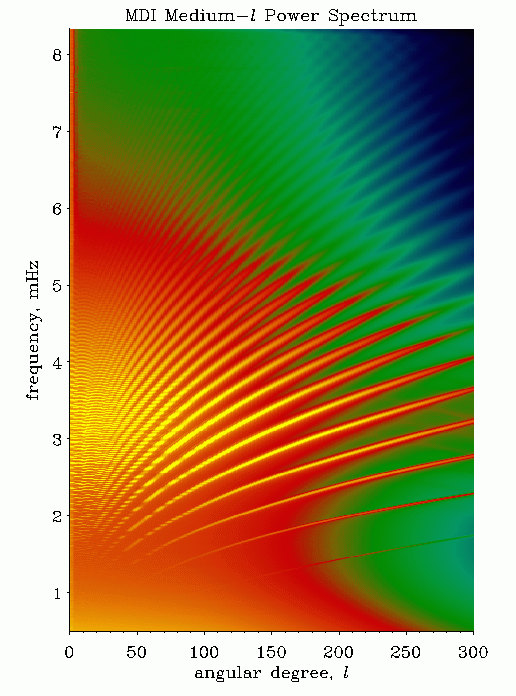@Astrosnapper's answer to Helioseismology of the Sun, what is actually measured? begins with:
The two main methods to detect the solar p-mode oscillations, which have a period of about 5 minutes (so frequency of ~3 milliHertz) are line of sight Doppler shift and change in irradiance.
3 mHz is the peak of the power spectrum, but a 2D histogram of shows significant power at frequencies beyond 8 mHz, corresponding to a period of only 128 seconds.
What does this mean? A dopplergram is collected over an extended period of time, maps of line-of-sight velocity determined via doppler shift of a given spectral line, and fit to a model based on spherical harmonics. Below is an example of a dopplergram and a histogram of power as a function of frequency and spherical harmonic. The shading left-to-right is the doppler shift associated with the rotation of the Sun, I'm not sure if the orbital motion of the Earth and other kinematic effects have been subtracted.
I went with 8 mHz and calculated the time and phase delay due to the different distances of parts of the 695,700 km radius Sun at a given instant of time. (script):

I found some older data and a nice description Measurements of Frequencies of Solar Oscillations from the MDI medium-l Program by E.J. Rhodes, Jr., A.G. Kosovichev, P.H. Scherrer, J. Schou & J. Reiter which comes from The Michelson Doppler Imager aboard SOHO.

above: Fig. 1c: Full disk Dopplergram. (full-scale version). Full-disk Dopplergram obtained with MDI on 9 July 1996. The large left-right variation is the signal from solar rotation. The "texture" is a combination of the motion from the sound waves that permeate the Sun and the large convective cells called "super-granulation". The bright feature in the lower right quadrant is an active region. Source

above: Fig. 1b: Power spectrum obtained from 144 days the MDI Medium-l data for the modes averaged over the azimuthal order m. The power concentrates in ridges corresponding to solar acoustic (p) modes. The lowest weak ridge corresponds to the fundamental (f) mode. Source


